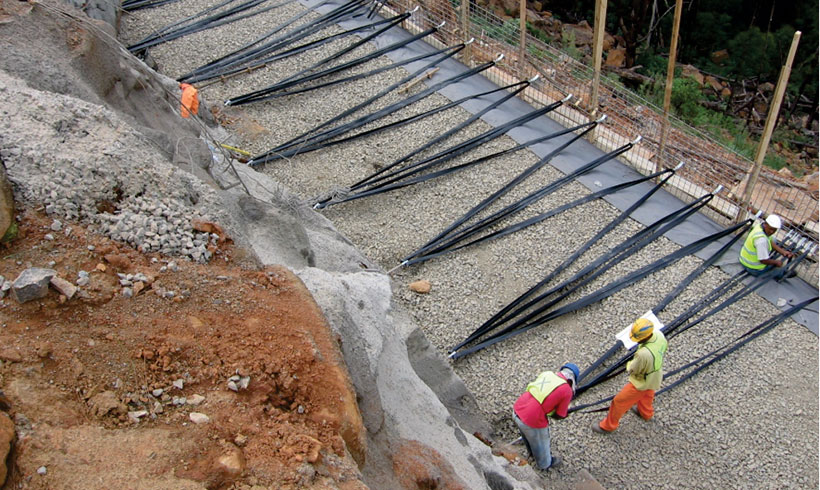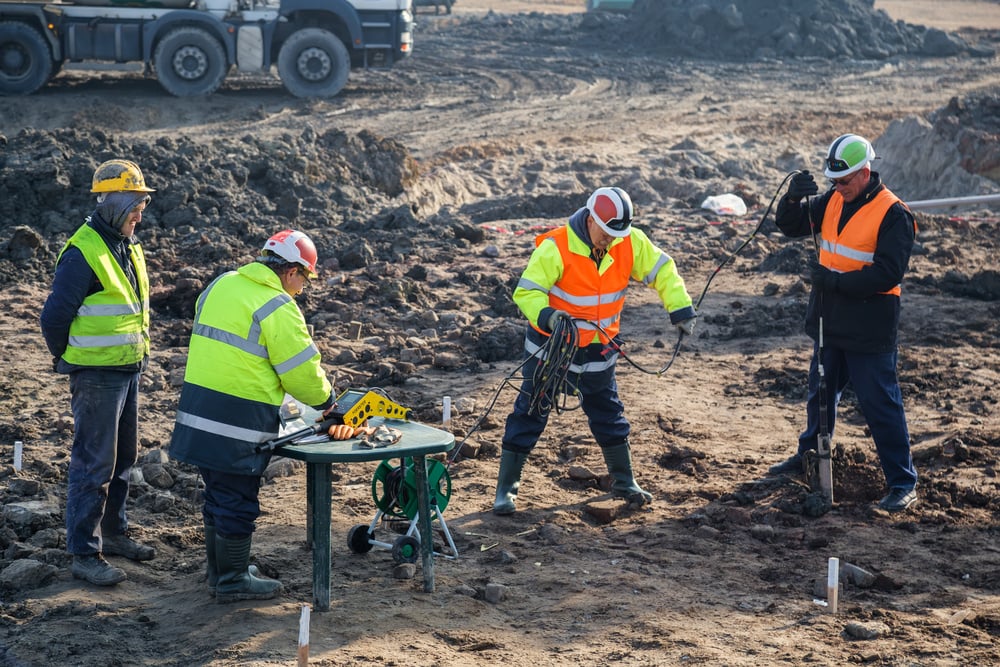Geotechnical Engineering For Construction Projects Fundamentals Explained
Table of ContentsGeotechnical Engineering For Construction Projects Fundamentals ExplainedFacts About Geotechnical Engineering For Construction Projects RevealedGeotechnical Engineering For Construction Projects Fundamentals ExplainedFascination About Geotechnical Engineering For Construction ProjectsSome Known Incorrect Statements About Geotechnical Engineering For Construction Projects The 10-Minute Rule for Geotechnical Engineering For Construction Projects
The role of geotechnical design substantially takes care of realizing the features of soil and rock, which might vary considerably by their thickness, moisture material etc. These functions must be taken a look at by geotechnical designers to forecast their activities under numerous scenarios. The security along with security of structures are impacted by soil conditions, making this evaluation necessary.A geotechnical designer will analyze dirt to identify the bearing ability of the planet and advise appropriate structure kinds, such as shallow structures, deep structures like stacks, or specialized remedies like drifting foundations for soft soils. Understanding the attributes and actions of soil and rock, along with exactly how they interact with building and constructions that have been put up on or within them, is just one of the primary explanations for why geotechnical design is necessary.
Ecological defense is achieved with geotechnical engineering. Experience in air, water, and dirt top quality upkeep is placed to utilize by geotechnical engineers to reduce the negative effects of jobs.
To sum up, geotechnical design is an essential self-control that maintains the resilience and honesty of civil facilities. Geotechnical designers contribute to making structure jobs effective all over the globe by recognizing the behavior of planet materials and using ideal preparation techniques.
How Geotechnical Engineering For Construction Projects can Save You Time, Stress, and Money.
By taking a look at dirt, rock, and subsurface problems, geotechnical engineers supply essential insights that aid in the design, building, and maintenance of buildings and framework.

The 4-Minute Rule for Geotechnical Engineering For Construction Projects
Laboratory testing: Figuring out the properties of dirt and rock. Field testing: Conducting examinations on-site to analyze problems. Analysis and layout: Utilizing data to develop structures, preserving walls, tunnels, and other structures. Several top-level building and construction projects have efficiently made use of geotechnical engineering to guarantee their stability and security. For instance:: The globe's tallest building required a deep understanding of the underlying geology.

As a leader in geotechnical engineering, BECC Inc. is committed to providing innovative and efficient options that meet the highest requirements of top quality and safety and security. For even more info on exactly how BECC Inc. can support your following construction job, contact us today and let us assist you build on solid ground.
William Rankine, an engineer and physicist, developed a different to Coulomb's earth pressure theory. Albert Atterberg developed the clay uniformity indices that are still made use of today for soil category. In 1885, Osborne Reynolds identified check that that shearing causes volumetric expansion of thick products and tightening of loosened granular products. Modern geotechnical engineering is stated to have begun in 1925 with the magazine of Erdbaumechanik by Karl von Terzaghi, a mechanical designer and rock hound.
Geotechnical Engineering For Construction Projects Things To Know Before You Buy
Terzaghi also developed the framework for theories of birthing capability of foundations, and the theory for prediction of the price of negotiation of clay layers as a result of combination. Later on, Maurice Biot totally created the three-dimensional dirt debt consolidation concept, expanding the one-dimensional version formerly established by Terzaghi to much more basic hypotheses and introducing the collection of fundamental formulas of Poroelasticity.
Geotechnical designers check out and determine the homes of subsurface conditions and products.
Top Guidelines Of Geotechnical Engineering For Construction Projects
Geologic mapping and interpretation of geomorphology are commonly completed in appointment with a geologist or design rock hound. Subsurface exploration normally involves in-situ testing (as an example, the conventional penetration examination and cone penetration test). The digging of examination pits and trenching (especially for situating faults and slide airplanes) may also be utilized to find out concerning dirt problems at depth. , which utilizes a thick-walled split from this source spoon sampler, is the most common means to gather disrupted samples.

If the user interface between the mass and the base of an incline has an intricate geometry, slope security analysis is difficult and mathematical service approaches are required. Usually, the interface's precise geometry is unknown, and a streamlined user interface geometry is assumed. Limited slopes call for three-dimensional models to be evaluated, so most slopes are assessed presuming that they are considerably wide and can be represented by two-dimensional versions.
What Does Geotechnical Engineering For Construction Projects Mean?
Creating the design based on a working hypothesis of actions expected under the most possible conditions. Selection of amounts to be observed as building and construction profits and calculating their anticipated worths based on the working theory under the most undesirable problems.
Measurement of quantities and evaluation of actual conditions. It is inappropriate for jobs whose layout can not be altered throughout building.